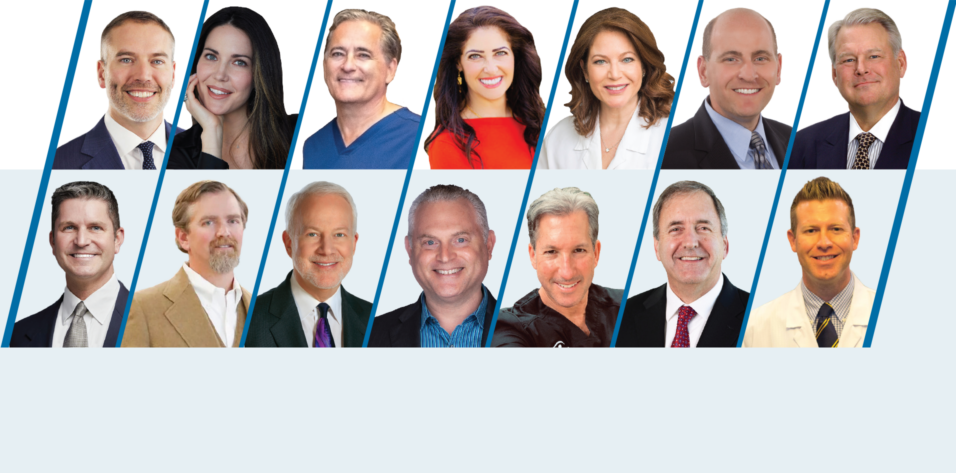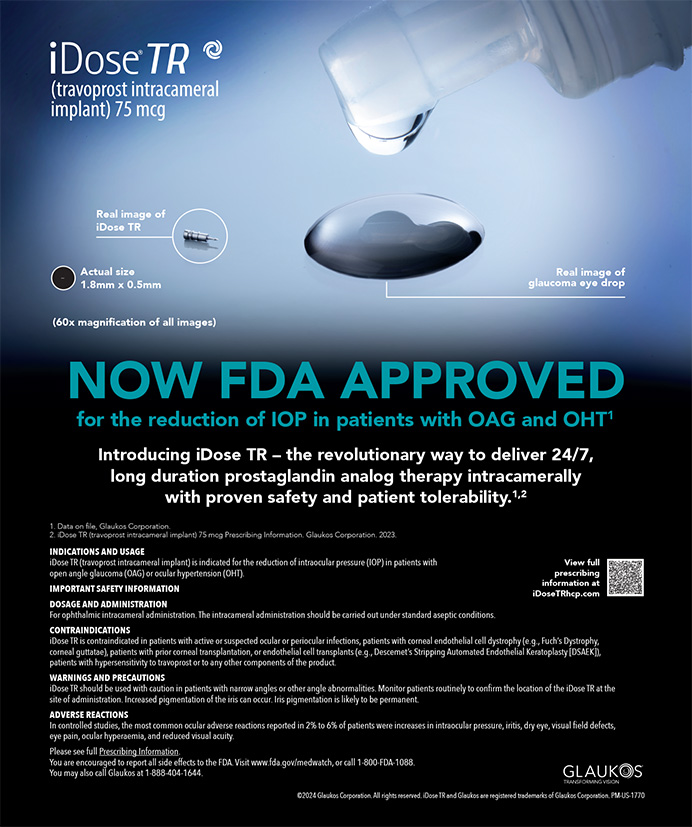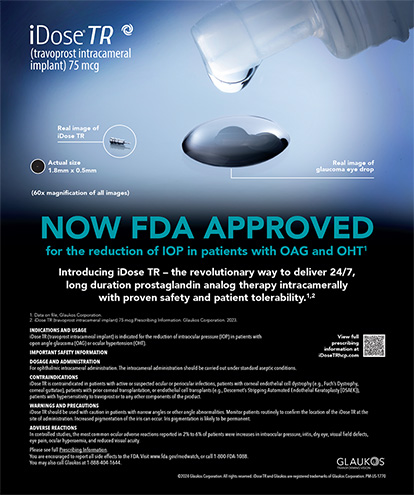Company: Surgilūm
Clinical Practice: Surgical Eye Care, Wilmington, North Carolina
Claim to Fame: A hidden inventor who created the world’s first laser target pendular corneal marker with preinked disposable marking tips
Dr. Brown shares his journey developing the RoboMarker and building his company, Surgilūm.
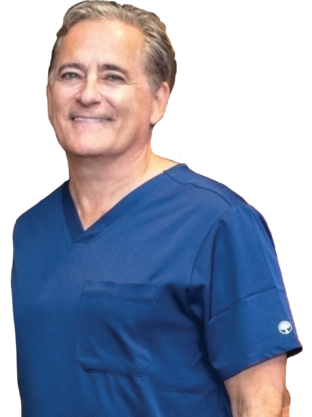
CRST: When did your love of invention begin?
Alan W. Brown, MD: The spark of innovation literally started when I was about 4 years old. My older brother and I noticed that, when our parents turned a switch on a lamp, the light bulb went from dull to bright. We thought, “Why not unscrew the light bulb, stick our thumb in there, and then turn the switch to see if we would light up?” We didn’t light up like the light bulb, but we did get a pretty good tingle, which we thought was hilarious. Product innovation really grabbed me after I was, pun intended, shocked into it.
I think my dad was a hidden inventor. He always liked to take things apart to see how they worked, and I definitely got that gene. When I was a kid, I had a treasure box of little parts from broken devices I disassembled. I was always finding something to make from the parts. When I was 7 years old, my sister showed me how to feel a pulse. I wondered if something could be made to count it. I had seen hand clickers being used to count how many people went into a movie theater. I knew they used a mechanism that went up and down, and a pulse is an up-and-down action as well. That was my first invention idea, putting two concepts together to make something else. My prototype—made from an erector set—didn’t work, but I went on to other ideas over the years.
When I was 10, I was tired of loading ball bearings (BBs) into my BB gun. I attached a medicine bottle to a pen tube and added a little spring and release pin. The BBs were funneled from the bottle into the pen tube, allowing me to load 20 at a time with a push of a button. Laziness is the mother of invention.
One thing I love about being an inventor is that you can’t really take credit for an idea. The idea just pops into your mind; it’s like walking along and noticing an interesting stone on the ground, and you pick it up and think, “That might be a jewel.” The idea is a gift, but you have to develop the idea. I suppose you can take a little credit for doing that.
CRST: You started your career in family medicine. What prompted you to switch to surgery in general and ophthalmology specifically?
Dr. Brown: I was in the US Public Health Service in rural Virginia. In family medicine, I had an outlet for working with my hands doing minor surgeries and plastic surgery because we were far from the big city. One day, I was scheduling an 85-year-old gentleman for basal cell removal on his face. I had a history of good plastics-like results because I was meticulous, but his 88-year-old sister said, “Dr. Brown, should you really be doing that? Shouldn’t he see a specialist in the big city?”
I went home and told my wife, Debbie, “I’m going to have to get out of family medicine because, if I don’t, eventually I’ll only be treating blood pressure, diabetes, and colds, and I won’t be able to use my hands.” I remember enjoying ophthalmology in my family practice rotations because of all the gadgets and the beauty of the slit lamp.
It was Robert Welch, MD, at Greater Baltimore Medical Center, who gave this family doctor a second chance at becoming a surgeon. I knew it was the right thing to do when I opened my first ophthalmology journal and saw the manufacturer ads for so many devices and different instruments. I was excited. I have to thank the 88-year-old sister because she’s the one who drove me from family medicine into the innovative field of ophthalmology.
CRST: How did shifting to surgery enhance your pursuit of innovation?
Dr. Brown: As a resident assisting the attending surgeon, you see where they’re struggling in surgery. That’s when you start to think, “Is there another way we could solve this problem?” There’s so much opportunity for innovation in ophthalmology; it’s a wonderful train to jump onto.
CRST: The website for your company Surgilūm says, “We are a company by eye surgeons for eye surgeons.” How does this mission statement reflect your values and vision for the company?
Dr. Brown: It reflects my journey in innovation. I had an idea that we needed a better corneal marker because I was tired of waiting for the autoclave and all the corneal markers to be sterilized. With those markers, we put wet ink onto metal and applied it to a wet cornea; the marks smeared and did not last long.
An idea popped into my head that, if markers had a disposable tip, I would never have to wait for an autoclave. I thought that, if we measured astigmatism with a fixation light, we should probably give the patient a fixation light when we mark them. I got a viscoelastic cannula, put some nibs from surgical markers in it, attached it in a light pen, and added a weight and a BB ring to create a pendulum. The idea was that I could mark several patients with a pendular marker that used disposable tips.
We made a second prototype (Figure 1). The pendulum was hidden inside, and we put some numbers on the dial so that you could change the axis of the tip to the axis of astigmatism. I went back to my biochemistry background and developed a dry formula ink that would adhere to a plastic tip. The dry ink would go into solution at a high concentration when it touched the tear film, allowing marks to last more than 2 hours—no more smeared ink marks.
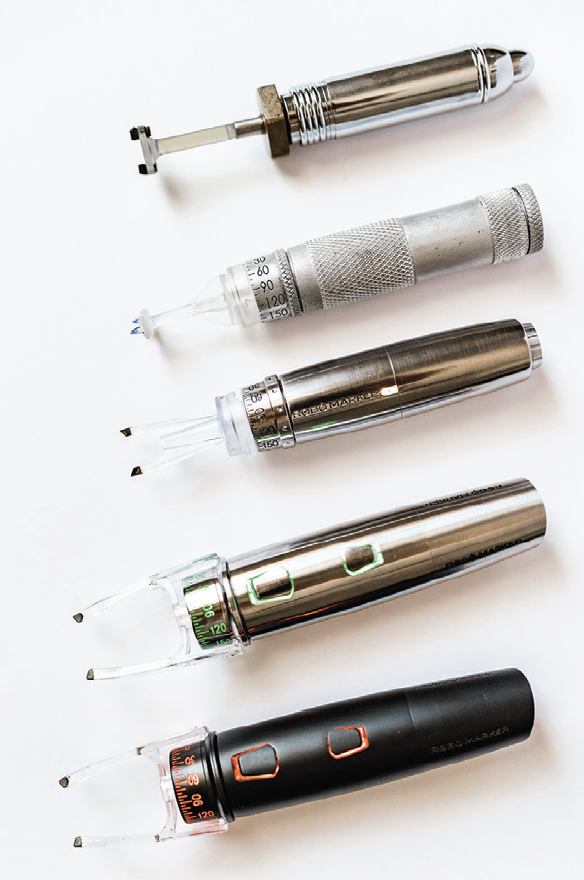
Figure 1. The evolution of the RoboMarker.
The current model, generation 2, further illustrates the second part of our mission statement—for eye surgeons. Vance Thompson, MD, liked the generation 1 RoboMarker but told me he was having trouble seeing the dial with his presbyopic eyes. In honor of Vance, we made a larger dial with lighted axis numbers and a tip that has a magnifying effect when rotated over the axis numbers.
Some surgeons felt the RoboMarker could be used for glaucoma surgery if the tip were wider. We made a wider tip, but we also made it adjustable so it could get smaller for corneal and cataract surgery. Another comment was that there could be tendency to land a little high or low on the cornea. We added a laser target so you know whether the instrument is centered on the eye and an accelerometer that makes the laser target blink if the RoboMarker G2 is not level (Figure 2).
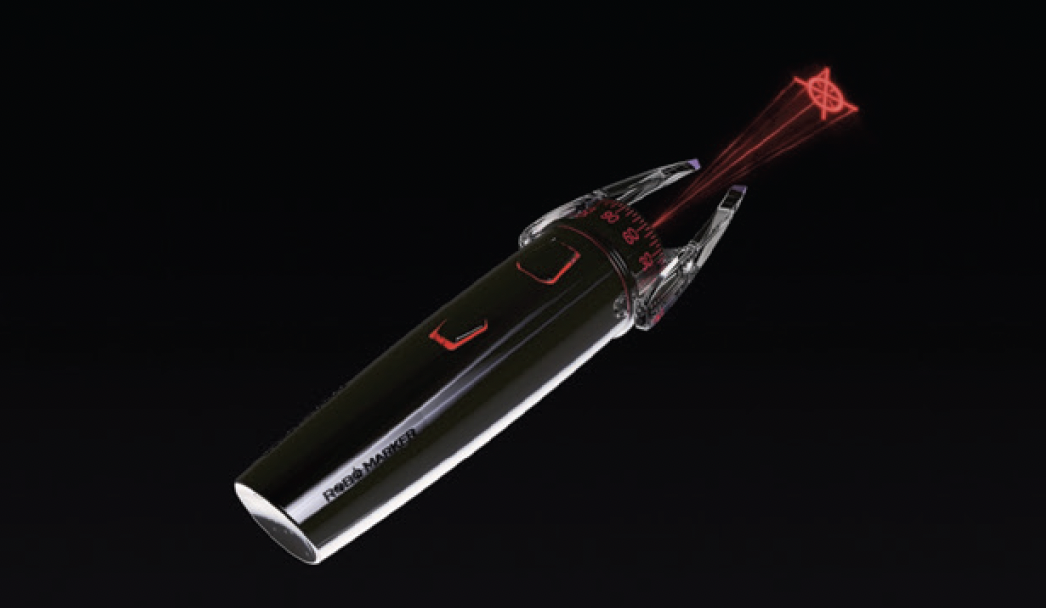
Figure 2. The RoboMarker G2 includes target projection.
CRST: Surgilūm has a large medical advisory board. How did you build it? What qualities do you look for in surgeon partners?
Dr. Brown: Building the advisory board was not my doing; Karl G. Stonecipher, MD, gets credit for that. We look for diversity in the types of surgery done and for surgeons who are excited about innovation without the benefit of any financial incentive; we are completely bootstrapped and have never paid anything to advisory board members.
CRST: What do you think is the biggest similarity between being a surgeon and a business owner?
Dr. Brown: With both, it’s critical to have a great team. In my practice, I have wonderful people who make patients feel welcome and do a great job with preoperative measurements. When patients love their results and compliment me, I try to reflect the compliment toward the skills of the team; I am just one part, and without their excellence, my surgery would disappoint.
Finding the right team in business is just as important. In the beginning of the RoboMarker journey, I couldn’t get buy-in from the usual big companies. One day, I said to Chuck Hess at Bausch + Lomb, “Maybe I should just start my own company.” He said, “You know, Alan, maybe you should.” He was right. Of course, I didn’t know what in the world I was doing, since my prior inventions were made and sold by other companies and I had no business background. I called my friend Martin, who was mowing lawns at the local university at the time, and asked if he wanted to start a medical device company with me, and he said, “Why not?” We flew to Florida to attend a medical device conference and learned so much information. With the help of my wife, Debbie, and additional team members, we obtained a CE Mark, FDA clearance, and a patent pending within 18 months. The right team understands the mission and gets it done.
CRST: You talk about having a good team. How important is that in your clinic?
Dr. Brown: Anyone reading this is going to moan about how hard it is to find well-trained staff or people whom you can train. They are your lifeblood. What we learned is it’s not so much having someone who knows everything about eyes. The critical factor is personality. You can train someone with a great personality to do whatever they need to do for the practice. A lot of our best technicians came from outside ophthalmology. Personality is everything. Patients tell us all the time that we treat them and each other like family.
CRST: Knowing what you know now, is there anything that you would do differently?
Dr. Brown: I would’ve started my own device company way earlier in my career. If I have a new idea now, I don’t have to go to another company and hope it gets developed. Within a certain realm, I can just develop my ideas on my time line. There is a special joy in being able to have that type of creative freedom.
CRST: What are you working on now?
Dr. Brown: Although it is a crowded space, we have drop delivery and dry eye ideas that are novel. We also have some fairly advanced ideas that involve glaucoma treatment. There’s even a potential treatment for COVID, but that would require outside venture money and a lot of consultants. We have some pretty sweet cataract surgery concepts as well. With more than 150 ideas, clearly, we need to change our business model.
The plan now is to expand our resources, get the help of outside engineering firms, vet the ideas, take them to some surgeon and innovation friends who know the industry and are not tied to the idea like the inventor, get some brutal feedback, prioritize them, and see what happens to the best of the ideas.

